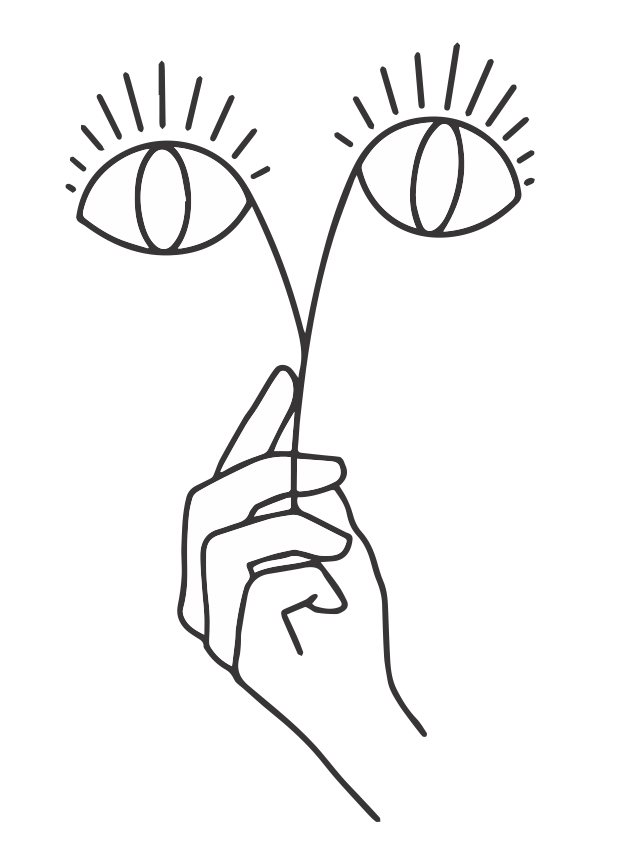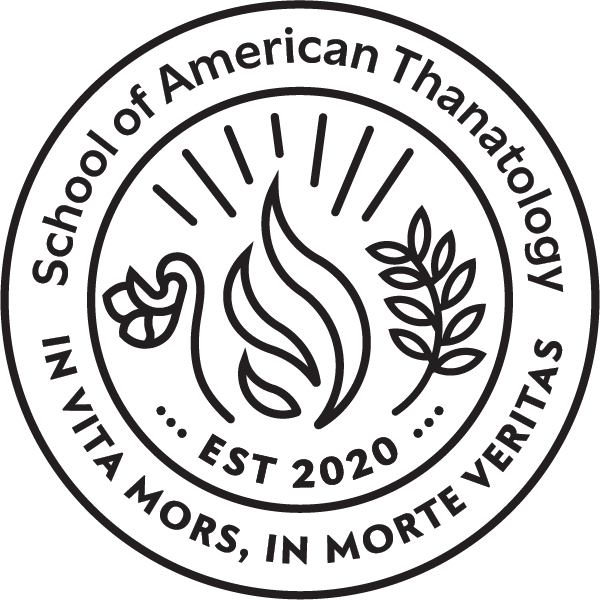About Us
Thank you for taking some time to learn more about us! The School of American Thanatology was founded in 2020 by Cole Imperi, an American Thanatologist.
Our vision is for education in thanatology, deathwork and thanabotany to recognize and value independent voices, all experience as valid and valuable, and community as a critical component.
The School of American Thanatology seeks to provide inclusive and accessible educational opportunities in and adjacent to the fields of thanatology, deathwork and thanabotany while also fostering research and writing opportunities for our community.
By deepening our understanding of death, dying, loss and grief, we come to understand ourselves, our experiences and each other more deeply.
The School of American Thanatology is guided and informed by its beliefs and commitments to:
The School of American Thanatology’s motto is
“In vita mors, in morte veritas.”
This translates to “In life there is death, in death there is truth.” The motto was written by Cole Imperi.
The motto appears in Latin, which is a nod to the school’s roots in Thanabotany and Thanatology. Latin is the language used when giving scientific names to plants. It’s also a nod to Thanatology, which comes from the Latin root words thanatos (death) and logia (speaking).
![]() The Doth symbol was designed in 2013 by Victor Imperi and represents both the art and science of deathwork, and the balance between logical and creative thinking required in order to effectively meet people where they are. Put another way, the Doth represents both the head and the heart. Each are required in order to work effectively and healthily with death, dying, grief, loss, and bereavement. The Doth is the symbol for Deathwork at the School of American Thanatology.
The Doth symbol was designed in 2013 by Victor Imperi and represents both the art and science of deathwork, and the balance between logical and creative thinking required in order to effectively meet people where they are. Put another way, the Doth represents both the head and the heart. Each are required in order to work effectively and healthily with death, dying, grief, loss, and bereavement. The Doth is the symbol for Deathwork at the School of American Thanatology.
 The Eyris symbol is comprised of a pair of eyes atop a stem being held by a hand. The imagery is inspired by paintings from northeastern France in the 1500s originally used to represent wisdom and the ability to see what is unseen. The Eyris is the symbol for Thanabotany at the School of American Thanatology and represents the wisdom of observation and the importance of presence.
The Eyris symbol is comprised of a pair of eyes atop a stem being held by a hand. The imagery is inspired by paintings from northeastern France in the 1500s originally used to represent wisdom and the ability to see what is unseen. The Eyris is the symbol for Thanabotany at the School of American Thanatology and represents the wisdom of observation and the importance of presence.
 The school seal contains many symbols. The seal features and outer ring containing the name of the school and the school motto. The inner circle contains a flame, representing wisdom and knowledge, and that flame is comprised of 3 tongues representing body, mind and spirit. A violet flower stands to the left of the flame, representing thanatology and a laurel leaf stands to the right of the flame, representing education. There are 7 rays of light emanating from the flame, representing death as both a beginning and an end, the completion of and start of a cycle.
The school seal contains many symbols. The seal features and outer ring containing the name of the school and the school motto. The inner circle contains a flame, representing wisdom and knowledge, and that flame is comprised of 3 tongues representing body, mind and spirit. A violet flower stands to the left of the flame, representing thanatology and a laurel leaf stands to the right of the flame, representing education. There are 7 rays of light emanating from the flame, representing death as both a beginning and an end, the completion of and start of a cycle.
The School of American Thanatology has students from 18 countries, 42 U.S. States and across 10 timezones. Our students come from a variety of professional, cultural and educational backgrounds and we recognize all experiences as valuable and valid.
The School of American Thanatology offers courses in 3 core areas:
• Thanatology The study of death and dying.
• Thanabotany The study of how people use plants to deal with death, dying, Shadowloss, grief and bereavement.
• Deathwork How people work with death, dying, grief, loss and bereavement.
The School of American Thanatology runs off of a 3-season calendar offering courses in the Winter, Spring, and Autumn. Courses running within each of our seasons may be self-paced, or run from 7–11 weeks long within each season. Some courses have prerequisites. In the months of July and December, no courses run (except for mentorship programs and self-paced courses.)
2021 School Seasons Winter Season
Monday, January 11, 2021–Friday, March 26, 2021
Spring Season
Monday, April 6, 2021–Friday, June 25, 2021
Autumn Season
Monday, September 7, 2021–Friday, November 26, 2021
The School of American Thanatology offers courses structured in a variety of ways which allows us to meet various learners where they are, and also allows us to prioritize the course content over a course template.
SELF-PACED COURSES
These courses may contain any number of modules (grouping of course material that might include recorded lectures, reading material, discussion posts, audio lessons and more). These modules most be worked in order, one after the other, and the learner has the opportunity to choose how quickly they move through each module. Some self-paced courses may put a timeline on completing any final assignments or tests, please read details about each course thoroughly.
SEASONAL COURSES
Courses offered in each season will run a minimum of 7 weeks to 11 weeks, with one module per week. Live lectures are all recorded and typically take place at the time time each week throughout the course. Seasonal courses will have specific due dates for any material relating to a broader certification.
MENTORSHIPS
Learners working on self-directed projects or under a mentorship typically meet with their teacher at regular intervals which might be weekly, bi-weekly or monthly. Mentorships typically run across multiple seasons.